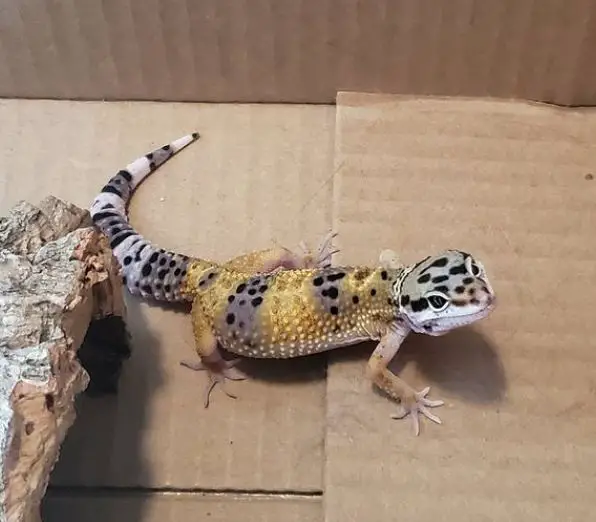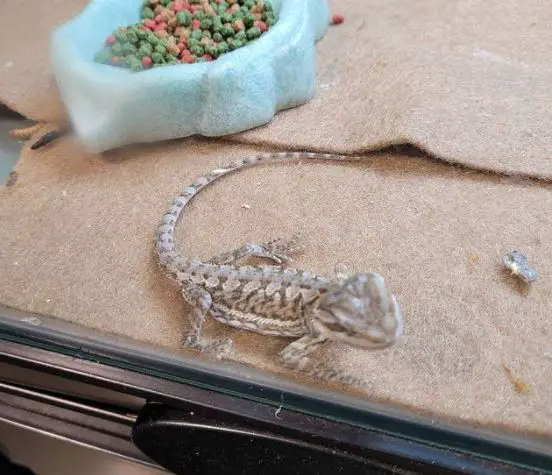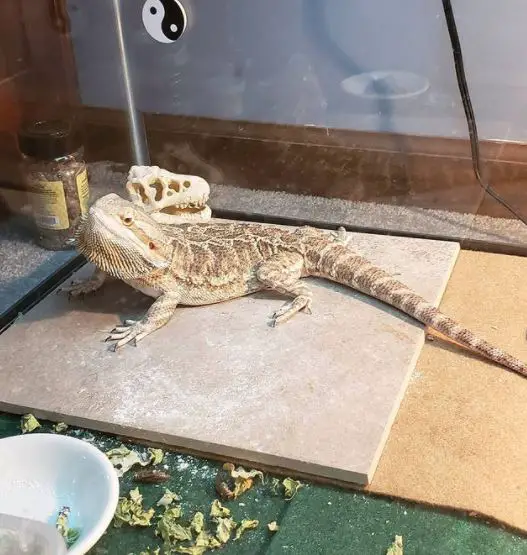How often should you clean a reptile carpet? That is one of the questions you should ask if you have pet reptiles.
Reptiles are popular pets in the USA, with 4 million households owning a reptile. This is due to the many benefits they provide such as being low maintenance and generally docile.
In addition to all of these great qualities, reptiles can add an exotic flare to your home or office with their beautiful colors and patterns.
What most people don’t realize when they get their new pet is how often you need to clean a reptile carpet for them!
Believe it or not, there are some very specific guidelines that should be followed when cleaning this type of carpeting in order to avoid injury from accidental bites or scratches from your new friend.
To help you out, we have created a list of dos and don’ts for maintaining safe reptiles.
Related Posts:
- Best Heat Mat for Leopard Gecko
- Top 7 Leopard Gecko Starter Kit for Easy Setup
- Best Substrate for Bearded Dragons
- How to Install a Reptile Carpet?
How Often Should You Clean a Reptile Carpet?
The reptile carpet should be cleaned 2 to 3 times a month.
You should change the carpet after 3 to 4 times you have washed it or when the fibers are loose. Wash it with soap that kills bacteria and then hang it to dry.
Can you reuse the reptile carpet? Yes, the reptile carpet is a carpet that can be cleaned and reused many times.

How to Clean a Reptile Carpet?
- Wash the carpet with soap that kills bacteria. Make sure it’s dry before placing it back inside the tank.
- ALWAYS wash your hands after handling any animals or cleaning their terrariums. This will prevent you from being exposed to harmful chemicals and diseases.
- If you have a glass terrarium, do not use water or any cleaning products inside. This can cause the glass to become brittle and break.
- We do not recommend you clean your terrarium with vinegar, hot water or other highly acidic substances because it could damage the material your terrarium is made of.
- If you are trying to get rid of stains on the carpet, you can try using a 0.5% bleach solution. But make sure you don’t leave it in there for too long as this could cause damage to the fibers.
- If your carpet smells bad or has feces marks on it, be sure to clean it immediately because that smell will attract your reptile to go on it again.
You can also watch this video to see how you can properly clean a tank.
Can You Put a Reptile Carpet in the Washing Machine?
A reptile carpet is a floor covering popular with snakes and other reptile keepers.
Its main purpose is to provide a safe, easy-to-clean, slippery surface for snakes and other reptiles.
The carpet can be cut to any shape or size required by an individual keeper, allowing the snake to be kept in a size and shape enclosure that best suits its needs.
Reptile carpets, like many other materials used for similar purposes, can be machine washed. However, we cannot recommend it.
The reason we do not recommend washing your reptile carpet is there are so many different types and they will all require different washing methods.
It is very hard to give guidelines for every single type of carpet.
A washing machine will tumble the carpet around, possibly causing loops and folds in the material.
Some carpets can easily be straightened out again after a tumble, but others may not react so well and could unravel or fray making them unusable.
A tumble also causes any dirt within the material, and the last thing any keeper wants is for their carpet to come out dirtier than when it went in.

If you do choose to machine wash your reptile carpet, please note that you should never put any item into a washing machine that was not designed or recommended to be put in one.
Many items sold in shops are not designed to be put in a washing machine and doing this can cause serious damage.
For more information on how to safely wash any item, please contact the manufacturer.
Reptile carpets come in many different varieties and we, therefore, recommend not putting them in the washing machine, but rather spot-cleaning them with soapy water or disinfectant wipes.
Can You Put the Reptile Carpet in the Dryer?
The quick answer is yes, but there are some factors to take into consideration before putting lizard skin through the spin cycle.
First, be sure your lizard skin rug has been thoroughly inspected for any potential issues: loose scales, frays, unraveling threads and seams, and so on.
If damaged areas are still present after receiving your lizard skin rug, do not put it in the dryer.
We would STRONGLY recommend you visit your local cleaners before subjecting your reptile carpet to a home laundry routine.
Lighter stains can be removed by regular cleaning methods but anything requiring an expert’s touch should be left up to the pros who know how to handle such products and treat them appropriately with care and cleanliness.
How Often Should You Clean a Bearded Dragon Tank?
You should change the substrate once every 2 weeks and wash it once a week. The water bowl should also be scrubbed weekly and changed at least every other week.
Changing the water is very important because it will act as a filter system. If you don’t change the water on time, bacteria and dangerous diseases can build up.
- Use hot tap water (temperature 98°F) to rinse all items: filter cartridge (if any), rocks, ornaments, and the tank. Make sure no soap residue is left behind because it can kill your bearded dragon.
- Use lukewarm water (temperature 80°F) to wash the tank out with. Do not use hot water as it can damage glass and plastics. If you have a very large terrarium with crystals inside (for decoration) you can turn them upside down and run lukewarm water through them as well. Make sure all soap is washed off completely before placing the tank back inside your terrarium.
- Rinse everything with hot tap water (temperature 98°F). Again, make sure no residue is left behind because this will kill your pet.
- If you have a filter cartridge, rinse it with hot tap water as well. After this, leave everything to dry at room temperature, where the air circulates freely. Do not use sun rays or forced air to speed up the process because this can damage items.
- When your tank is dry, use a new filter cartridge (if any), then wash it with lukewarm water and put it back inside the tank.
- Place everything back inside your terrarium. Make sure you place things in the right spot as they were before you took them out because if you don’t, your pet will sense that something is different and could get startled or even depressed from it.

Conclusion
The article has given some great information on how to properly clean reptile carpets.
It is important that you take your time and do a thorough job in order for the cleaning process to work as best as possible.
It is recommended that you vacuum at least once per week or more if needed, spot clean spills with water or an acidic cleaner, use a good odor neutralizer after all of these steps have been taken, and replace any soiled pieces of furniture regularly.
We hope this blog post was helpful!
Key points to take away for how often you should clean reptile carpet:
Reptile carpet is a popular substrate choice for many reptile enclosures, as it provides a clean and easily replaceable surface. However, regular cleaning is essential to ensure your reptile’s well-being and maintain a hygienic environment. Here are key points to consider regarding how often to clean reptile carpet:
1. Regular Spot Cleaning:
- Perform daily or as-needed spot cleaning to remove feces, shed skin, and any visible debris.
- This helps keep the enclosure clean and prevents the buildup of waste.
2. Full Cleaning Frequency:
- A complete cleaning of reptile carpet should be done on a regular basis, typically every 2 to 4 weeks.
- The exact frequency may vary based on your reptile’s species, size, and enclosure size.
3. Assess Odor and Hygiene:
- Pay attention to the enclosure’s odor and overall hygiene to determine when a full cleaning is required.
- Foul odors or soiled carpet are signs that it’s time for a thorough cleaning.
4. Easy Removal and Replacement:
- One of the advantages of reptile carpet is its ease of removal and replacement.
- When it’s time for a full cleaning, take out the carpet, dispose of any soiled areas, and replace it with a clean piece.
5. Cleaning Steps:
- When performing a full cleaning, rinse the reptile carpet thoroughly with warm water.
- You can use a reptile-safe disinfectant or a mixture of water and a small amount of vinegar to remove any bacteria or odor.
6. Drying:
- Allow the carpet to dry completely before returning it to the enclosure.
- Damp or wet carpet can lead to fungal growth or discomfort for your reptile.
7. Spares on Hand:
- It’s a good idea to have spare pieces of reptile carpet on hand.
- This makes it easier to provide a fresh substrate during the cleaning process.
8. Reduce Stress:
- Minimize stress for your reptile during the cleaning process by maintaining a consistent temperature and providing temporary hiding spots.
9. Hygiene and Health:
- Keeping reptile carpet clean is vital to prevent the growth of harmful bacteria and parasites.
- Dirty substrate can lead to skin and respiratory problems for your reptile.
10. Regular Assessment: – Routinely inspect the carpet for signs of wear and tear, fraying, or damage. – Replace worn or damaged carpet promptly to prevent any safety hazards.
11. Consult a Reptile Expert: – If you have specific questions about cleaning your reptile’s enclosure or choosing the right cleaning products, consult a reptile expert or veterinarian.
In summary, maintaining reptile carpet requires a combination of daily spot cleaning and regular, thorough cleaning to ensure your reptile’s health and comfort. The frequency of full cleaning can vary based on your reptile’s specific needs and the state of the enclosure. Prioritize cleanliness and hygiene to provide a safe and comfortable environment for your pet.
Further Reading:
- Best Turtle Substrate for Your Pet Tank
- Best Substrate for Russian Tortoise
- 6 Best Substrate for Leopard Tortoise


